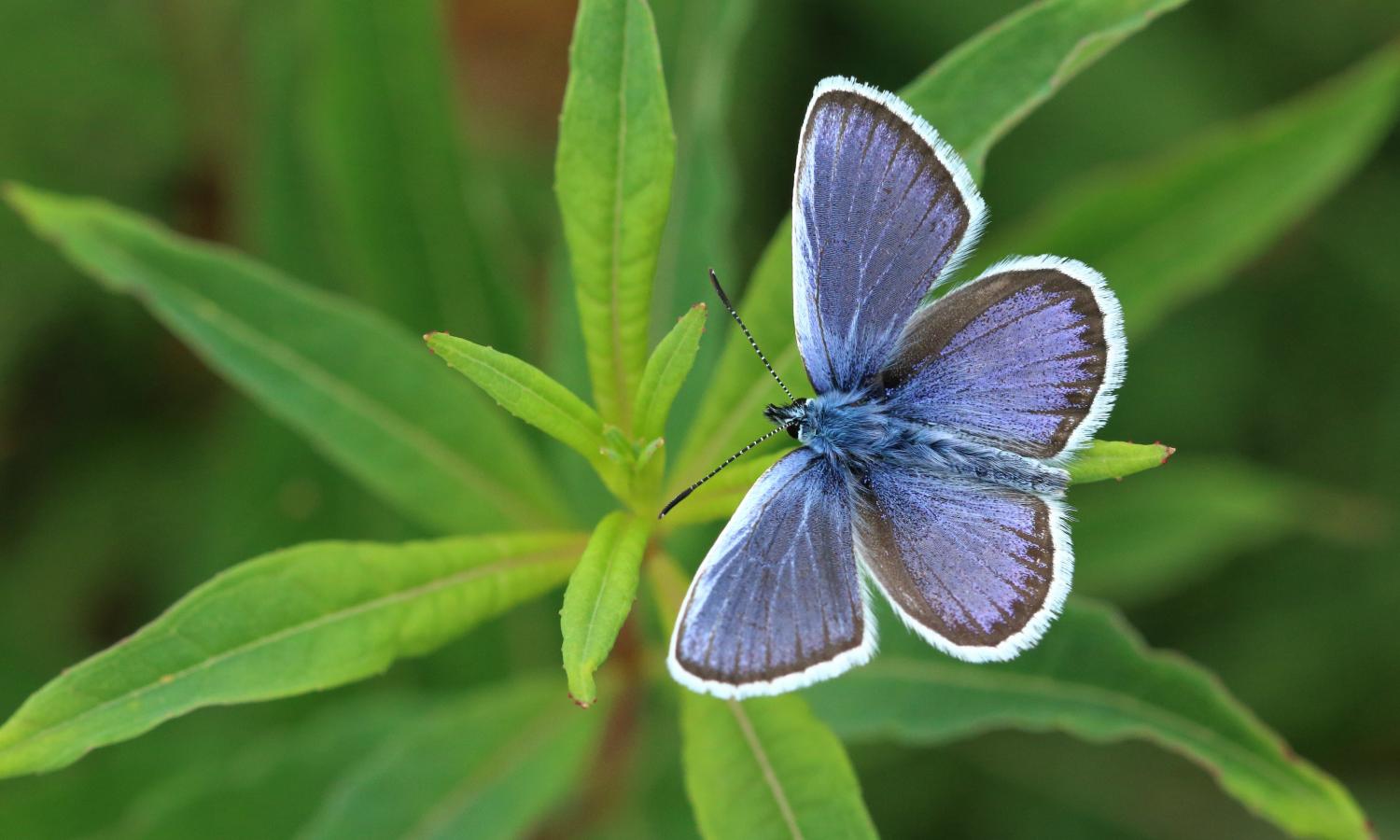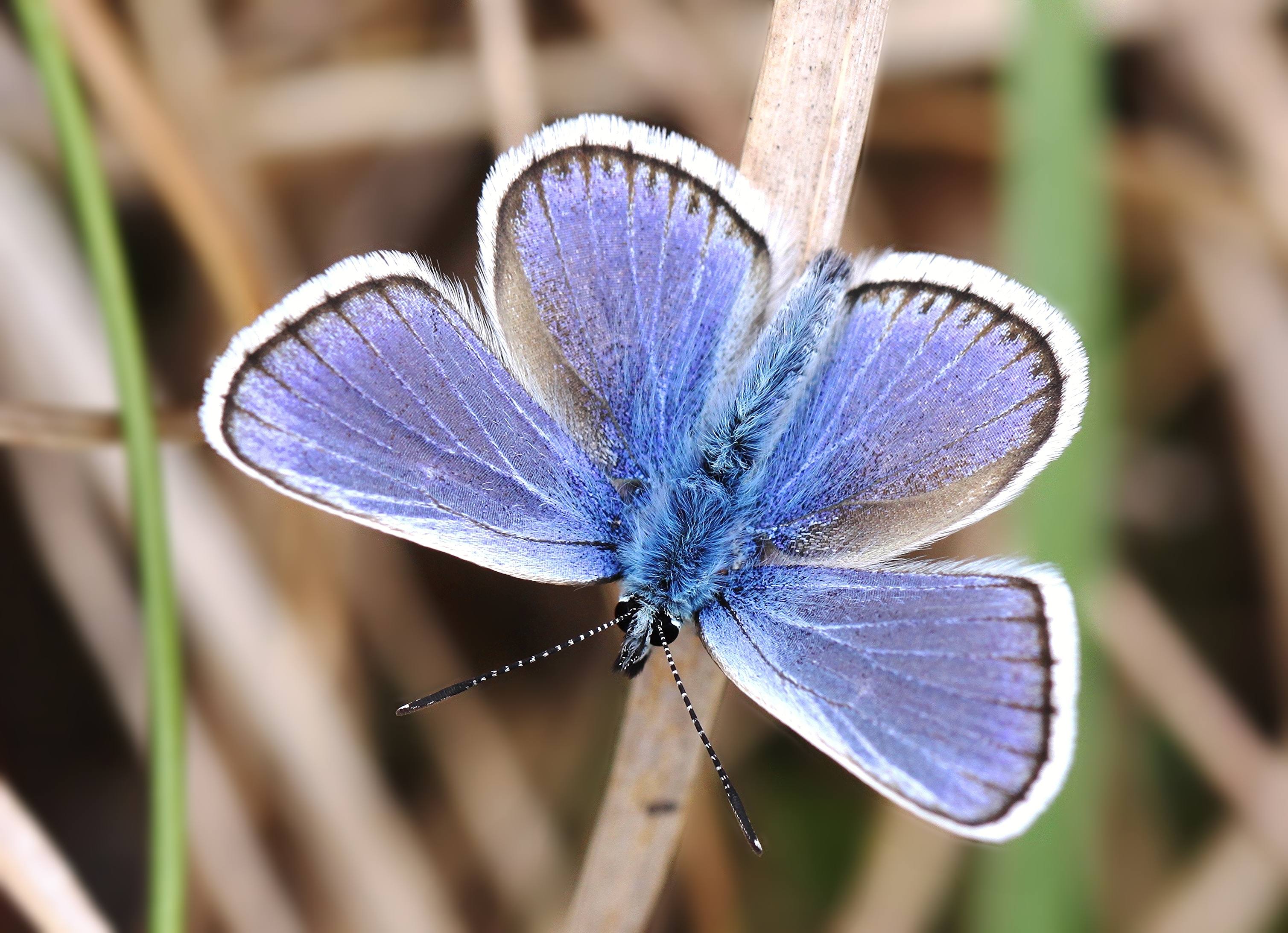The rare Silver-studded Blue Butterfly is making a comeback at Purdis Heath near Ipswich, Butterfly Conservation can reveal.
The wildlife charity became extremely concerned in 2010, when only four butterflies were counted at the site, but this year it’s been confirmed that at least 55 have been recorded.
The improvement comes just two years after the Ipswich Heaths project was set up by Butterfly Conservation (BC), thanks to money from the Wren Biodiversity Fund. The project focusses on restoring overgrown heathland for butterflies and moths that depend on this type of habitat to survive and is due to continue until December 2016.
BC’s Regional Officer, Sharon Hearle, said: “I am confident the rise in the number of Silver-studded Blue at Purdis Heath is down to the continued efforts of Ipswich Heaths hard-working volunteers, but numbers are still extremely low when you compare them to what they were just 20 years ago. Back then you could easily record over a thousand Silver-studded Blue throughout the summer months, so we need to continue our work to help them.
“The heath needs constant management to ensure it doesn’t become too overgrown, which means we need to remove encroaching scrub and oak trees from the central area of open heath. The public can rest assured that over 3000 oaks and the wide belt of scrub around the perimeter will remain untouched and that by clearing this small section, we can encourage the growth of Bell Heather – the main source of nectar for this butterfly.”
The sandy conditions created for the Bell Heather are also favoured by black ants, which have an important relationship with the Silver-studded Blue and are crucial to its survival. When the caterpillar turns into a chrysalis, the ants will bury it underground or take it into their nest, caring for it and protecting it from any predators until the butterfly emerges.
 Sharon said: “This attractive butterfly has become a rarity in most regions of Britain, with many colonies lost over the last century due to the ongoing destruction of heathland habitats. Near Ipswich, this type of land has been massively reduced and fragmented by industrial and recreational pressures, as well as the demand for new housing. This is why it is vitally important these remaining sites are well managed and this project has made a great start at doing this.”
Sharon said: “This attractive butterfly has become a rarity in most regions of Britain, with many colonies lost over the last century due to the ongoing destruction of heathland habitats. Near Ipswich, this type of land has been massively reduced and fragmented by industrial and recreational pressures, as well as the demand for new housing. This is why it is vitally important these remaining sites are well managed and this project has made a great start at doing this.”
The Silver-studded Blue can be seen flying from late June through until mid-August. The male can be distinguished from similar species like the Common Blue by the thicker black margins on its upper wings and the black marginal spots on the underwing. These are studded with silvery-blue centres and it is these metallic ‘studs’ that lend the butterfly its name.
If you would like to get involved in the Ipswich Heaths project, volunteer work parties are held every month – visit www.suffolkbutterflies.org.uk for more details.
Purdis Heath is protected from development as a Site of Special Scientific Interest by Natural England which is the UK government’s advisor for the natural environment. It is designated for its heather heathland and acid grassland which is now very rare and supports Silver-studded Blue Butterflies.


